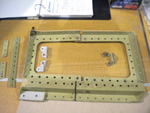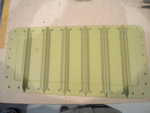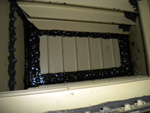Recently, Dassault Aviation released several service bulletins and Falcon Service Advisories (FSAxxx-57-00-01-R1) announcing the installation of ‘wing tank modifications’ for all of the Falcon 50/900/2000 series aircraft. This modification is commonly being called the ‘dry bay’ modification.
The aircraft models and serial numbers affected are:
To explain briefly what this modification is about, all the Falcon 50/900/2000 series aircraft basically have the same wing installed, with minor deviations. The existing wings have a ‘dry bay’ (meaning no fuel in this area) located outboard of the main landing gear wheel well area. The purpose of the ‘dry bay’ is to contain any fuel leakage in the extremely rare occurrence of a high-speed runway excursion and subsequent wing damage. Following review of the wing design, Dassault Aviation has elected to modify the wing by adding an additional sealed boundary area between ribs #4 and #5, forward of the wing rear spar, which increases the ‘dry bay’ area.
The service bulletins for this modification for the affected models are: SB 50-496, SB F900-388, SB F900EX-329, SB F2000-358 and SB F2000EX-171. The service bulletins will be mandated to be accomplished by both EASA and FAA ADs, which will be released in the coming months. The ADs will give operators until mid-year 2022 to have the modifications completed. This improvement is currently installed on ‘in-production’ aircraft.
The wing modification takes approximately four weeks to complete and consists of 640 labor hours. The labor hours are broken down as follows: 300 hours for wing plank removal/installation, 300 hours for kit installation, and 40 hours for paint touch-up of the upper and lower wing skins. The aircraft which were covered by the 10-year primary structural warranty, as of September 30, 2009, will have the installation of the kits (both parts and labor) covered by a Dassault commercial program as referenced in the Falcon Service Bulletin Advisories. This commercial program can be applied in an Authorized Service Center or Dassault-owned facility. The compliance of these service bulletins should be accomplished during a “C” inspection to take advantage of the scheduled downtime.
Pictures showing the many parts of the modification kits can be seen here, with the final picture showing the panel installed in the wing fuel tank.
 |
 |
 |
Both Duncan Aviation-Battle Creek and Duncan Aviation-Lincoln have personnel trained and experienced with the installation of the ‘dry bay’ kits.
For questions about this or other Falcon technical issues, contact your Duncan Aviation Falcon Tech Rep.
December 2025
December 2025
October 2025
September 2025
August 2025